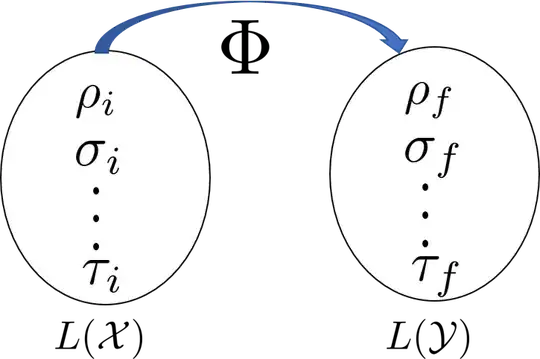1. On page 73 of John Watrous' famous book, a quantum channel is defined as a linear map
$$\Phi: L(\mathcal{X})\rightarrow L(\mathcal{Y})$$
Now $L(\mathcal{X})$ stands for $L(\mathcal{X},\mathcal{X})$, which is itself a collection of all linear mappings $\mathcal{A}: \mathcal{X}\rightarrow \mathcal{X}$ (page-8).
2. As a physics student, when I look at some simple examples of a quantum channel, say a phase damping channel $\Phi_{PD}$, the way I look at it is that it takes my initial state $\rho_i$ at time $t_i$ to a final state $\rho_f$ at time $t_f$.
$$\Phi_{PD} [\rho_i] \rightarrow \rho_f$$
Trying to compare these two scenarios, it seems $\rho_i \in L(\mathcal{X})$ and $\rho_f \in L(\mathcal{Y})$. What happens to $\mathcal{A}$ here? What is exactly the one-to-one correspondence between 1 and 2?
Edit: I have tried to convey my query by a diagram in which the job of $\Phi$ is illustrated. I want to understand what is $\mathcal{A}$ in the following diagram:
